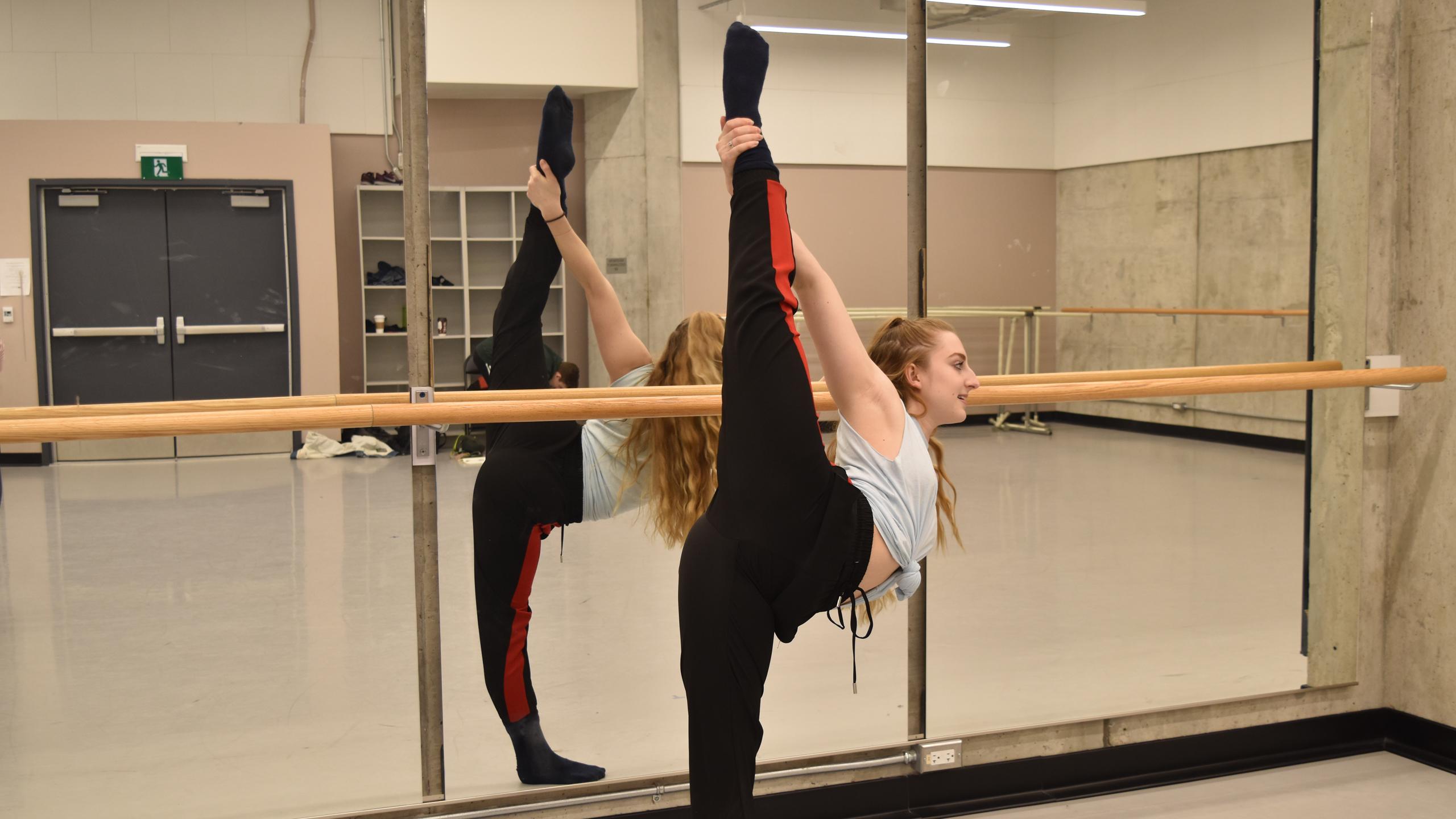By Jemma Dooreleyers
When you ask the 11-year-old girls at High Pointes Dance Academy in Cobourg, Ontario, if dance is a sport, the answer is yes.
The interview takes place during the fifteen-minute break at their Friday night rehearsal. Their faces are red. They’re chugging their water during one of their breaks. It’s 4 p.m. and they’ve got about five more hours to go until they finish their practice that day.
“You have to work as a team, it gets your heart pumping, and you have to put a lot of time into it,” said Rylee Brown, an 11-year-old dancer who competes with the academy.
They say it has all of the aspects of a sport and that there really is no difference.
“You have to practice and you are never perfect at it,” said Aeowyn Commissing, another dancer in the academy. “You have to keep on going, kind of like other sports that you keep on practising and always have things to improve.”
They say they feel sad and angry when people tell them that dance isn’t a sport. “It kind of makes me want to fight someone,” says 11-year-old Avarie Harmer-Kelly.
But they know the level of training and experience dance takes and they want to feel validated and respected for the hard work they put in, as other athletes do. For them, dancing is a sport and should be recognized as such.
However, the debate remains among the dance community and the outside world, mostly among young boys and young girls trying to get on each other’s nerves.
So much so that, in an effort to bring a younger audience to the Olympics, the organizing committee announced in February that it would recommend break dancing for the 2024 games in Paris.
The proposal will be presented to the International Olympic Committee at the end of March and is not expected to be confirmed until December 2020. This is one step closer to dance being recognized as a sport.
But the question of whether dance is a sport isn’t that simple.
“You have to practice and you are never perfect at it”
Third-year performance dance student Kathleen Pick is the one of the few who considers dance more of an art form than a sport. With the expression and artistry of the movement that is involved with dance, she believes that it is unfair to only consider dance as a sport.
“I personally would not consider it a sport,” she said. “But it does require a great deal of athleticism to accomplish a lot of its necessary vocabulary.”
Watching Pick and her dance partner Ethan Kim snap into shoulder stands, drop into splits and burst into jumps, it’s not difficult to imagine how much athleticism is involved when attempting these moves. They make it look effortless, but wait for moments in between to catch their breath.
“I remember as a kid, it upset me because it seemed that they didn’t acknowledge the physical demand that dance puts on you,” says Pick.
“As a little girl, I definitely wanted to be validated for my hard work because dancing is not easy and it is so different from most sports. You can’t necessarily just come in off of the street and do any of the vocabulary, just a lot of it is not natural to the human body.”
Historically, dance was seen as delicate, fragile and girly because of its graceful nature. However, if you have ever been a dancer or been close to one, you will come to find that it is not beautiful. Toenails fall off. Ankles, knees, hips and backs are constantly in a stage of recovery.
There are ice baths and bandages and blisters. Through the rise of sports medicine, physical therapy and chiropractors there has been more visibility to the effects that dance has on the body.
“A dance injury is a sports injury,” says Dr. Colin Mandin, the chiropractor and owner of Bayridge Chiropractic Centre. “Dance is really a quite specialized and really intense physical activity that requires a lot of fine motor skills and has a lot of repetitive manoeuvres.”
Toenails fall off. Ankles, knees, hips and backs are constantly in a stage of recovery
A study published in the Journal of Athletic Training states that 60 to 90 per cent of dancers will be injured in their careers. The study cited that there were four categories of common dance injuries: knee injuries, foot and ankle tendinitis, back injuries and general injuries. Dance caused such a risk to injury that children under 10 should be careful when training in because it could cause complications later in life.
Many dancers say that they don’t want to have it summed up only to a sport because it does not acknowledge the artistry that it involves.
“I’m not sure if this is an acknowledged category or anything but I call it an athletic art,” said Pick. “It’s not a sport in the sense that it does not usually incorporate a lot of the rules that you would imagine from a sport.”
Pick also says that in competitive gymnastics, there is a point system. The same goes for figure skating, which is the two that would be the closest to dance that would be considered a sport. However, when a dancer is dancing as a professional there is no competitive aspect. Instead, they’re thrown into dance shows and recitals, placing them into the category of entertainment—this is after all, what dance was first developed to be.
Dancers only started competing in the 1930s in dance marathons, which were then adapted as time went on.
Watching a gymnast, a figure skater or a dancer compete, many feel they are a spectator. However, when watching a play, musical or movie, those same people are now known as the audience. The spectator is watching for a specific outcome and cheering for their team, whereas the audience wants to be entertained and feel as though they had experienced something that enriched their mind. There is no argument that a dancer is not an athlete but you cannot undermine the creativity that goes into dancing when choreography, music and story come together.
So, for the 11-year-old girls, and those who believe it to be so, dance is a sport and nothing is going to change that. But according to the young adults at Ryerson and more experienced dancers, it is more than that.
It is an art.











Leave a Reply